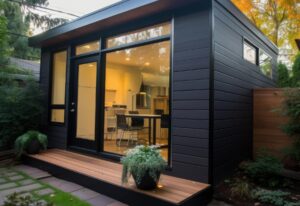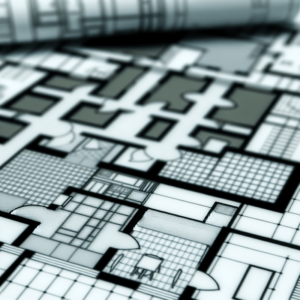When designing an accessory dwelling unit (ADU), also known as a granny flat, in-law suite, or secondary unit, choosing the right color scheme and aesthetics is crucial. The perfect color palette and design elements can significantly impact the value, functionality, and overall appeal of your ADU. In this comprehensive guide, we’ll explore the world of color theory, popular color schemes, and aesthetic considerations to help you create a stunning and cohesive living space.
Understanding the Basics of Color Theory for Your ADU
To create a harmonious color scheme for your ADU, it’s essential to understand the fundamentals of color theory. Colors can be categorized into primary (red, blue, and yellow), secondary (green, orange, and purple), and tertiary colors. Additionally, colors are often described as warm or cool, depending on their undertones. Warm colors, such as red, orange, and yellow, can make a space feel cozy and intimate, while cool colors, like blue, green, and purple, can create a calming and expansive atmosphere.
Color psychology also plays a significant role in designing your ADU. Different colors can evoke various moods and emotions:
- Blue: Tranquility, trust, and serenity
- Green: Nature, growth, and balance
- Yellow: Optimism, creativity, and energy
- Red: Passion, excitement, and strength
- Purple: Luxury, spirituality, and mystery
- Orange: Warmth, enthusiasm, and vitality
- Pink: Compassion, nurturing, and love
- Brown: Stability, comfort, and reliability
Selecting the Ideal Color Palette for Your ADU
When choosing a color scheme for your ADU, consider factors such as natural lighting, the size of the space, and your personal preferences. Popular color schemes for ADUs include:
- Monochromatic: Varying shades of a single color
- Complementary: Colors opposite each other on the color wheel
- Analogous: Colors adjacent to each other on the color wheel
- Triadic: Three colors evenly spaced on the color wheel
To balance and harmonize the aesthetics of your ADU, consider the 60-30-10 rule. This guideline suggests using 60% of a dominant color, 30% of a secondary color, and 10% of an accent color. This approach creates a visually appealing and well-balanced space.
Integrating Aesthetics with Color in Your ADU Design
Aesthetics play a vital role in creating a cohesive and inviting ADU. Different aesthetic styles, such as Scandinavian, Bohemian, Minimalist, or Industrial, can be enhanced by carefully selecting colors that align with their characteristics.
The interplay between color, furniture, and decor is crucial in achieving a well-designed ADU. When selecting furniture and decor, consider how their colors and textures will complement your chosen color scheme. Opt for pieces that create a sense of unity and flow throughout the space.
Real-Life Examples: Successful Color and Aesthetic Integration in ADUs
To better understand how effective color and aesthetic choices can enhance an ADU, let’s examine some practical examples:
| ADU Style | Color Scheme | Key Features |
|---|---|---|
| Scandinavian | White, gray, and natural wood tones | Minimalistic design, clean lines, and abundant natural light |
| Bohemian | Earthy colors, such as terracotta, mustard, and teal | Eclectic mix of patterns, textures, and plants |
| Industrial | Black, white, and gray with pops of bold colors | Exposed brick, metal accents, and raw materials |
These examples demonstrate how effective color and aesthetic choices can enhance the form and function of an ADU, creating a space that is both visually appealing and practical.
Overcoming Challenges in Choosing Colors and Aesthetics for Your ADU
When designing an ADU, you may face challenges such as limited space or the desire to create a versatile aesthetic appeal. To combat small space limitations, consider using lighter colors to create a sense of openness and airiness. Incorporating mirrors and reflective surfaces can also help expand the perceived size of the room.
To avoid aesthetic overwhelm, focus on choosing a primary and secondary color, and use accent colors sparingly. This approach will help maintain a sense of harmony and balance throughout your ADU.
Looking Ahead: Future Trends in ADU Color Schemes and Aesthetics
As we move into the future, color and style trends for ADUs are likely to evolve. Predicted color trends include a continued emphasis on natural and earthy tones, as well as the incorporation of bolder, more vibrant hues. Environmentally conscious choices, such as using sustainable materials and energy-efficient lighting, may also impact aesthetic and color selections.
Putting it All Together: Implementing Your ADU Color Scheme and Aesthetic
To successfully integrate your chosen color scheme and aesthetic into your ADU, start by deciding on your primary and secondary colors. Consider how these colors will work with your desired aesthetic style, such as Scandinavian or Bohemian. Remember to maintain a sense of harmony and balance throughout the space, using the 60-30-10 rule as a guideline.
Conclusion: Embracing the Power of Color and Aesthetics in Your ADU
Creating the perfect color scheme and aesthetic for your ADU is a powerful way to maximize its value, functionality, and overall appeal. By understanding color theory, considering your personal preferences, and drawing inspiration from successful examples, you can design a stunning and cohesive living space that meets your needs and reflects your unique style.
Remember, thoughtfully considered design choices are key to creating an effective and inviting ADU. Embrace the power of color and aesthetics, and watch your ADU transform into a beautiful and functional living space.







